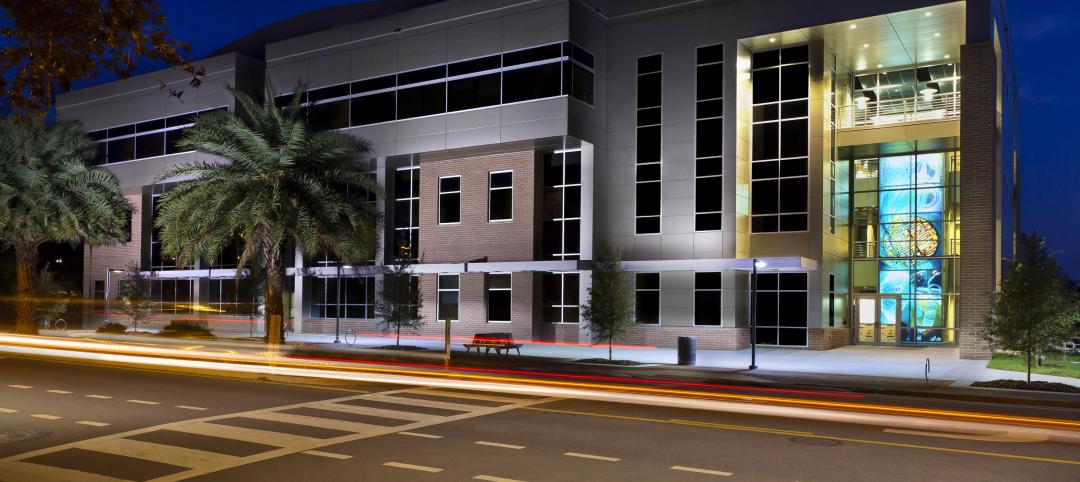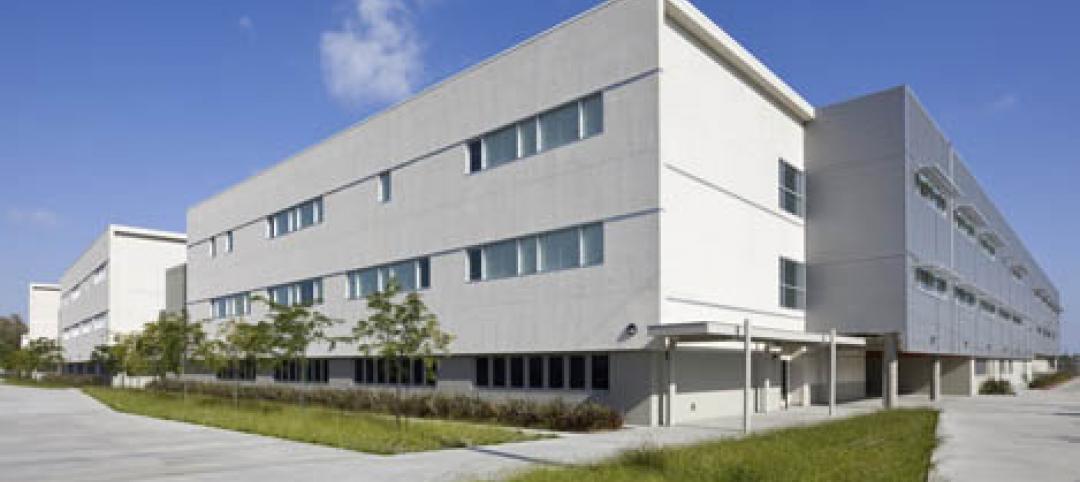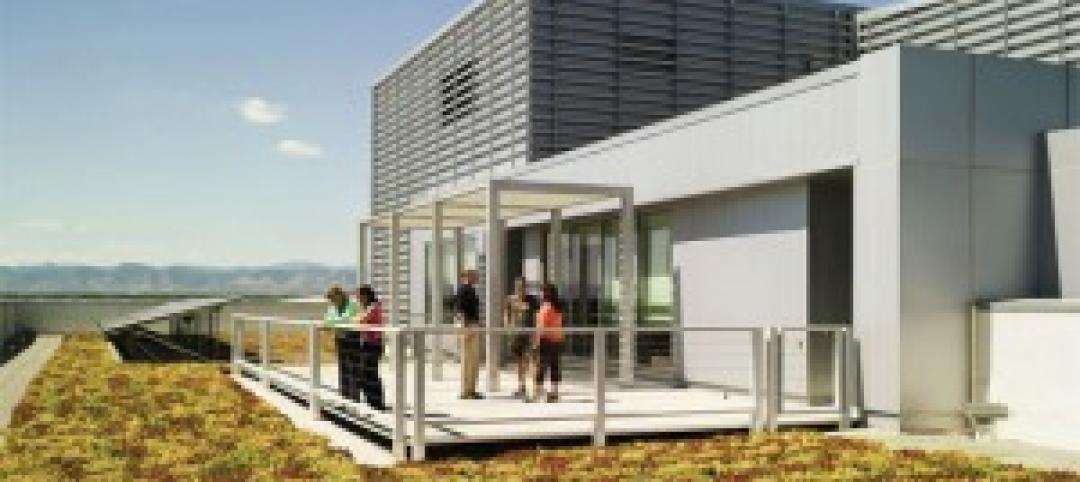Since April, Arup, the global built environment consultant, has been gathering data on an undisclosed number of buildings it has worked as a prelude to its commitment, which commenced this month, to conduct whole lifecycle carbon assessments for all of its construction and renovation projects going forward.
Those assessments will attempt to estimate a building’s carbon emissions from pre- and post construction, and encompass such variables as manufacturing, transportation, materials selection, operations, and maintenance. Arup estimates that as much as half of a building’s lifecycle CO2 emissions is attributable to embodied carbon before the building is operational.
Arup’s goal through its commitment is to confidently advise its developer-owner clients, within budgetary and quality parameters, on what products for each of a building’s systems and subsystems will produce the least amount of carbon emissions during a building’s duration. “We’re attempting to build our insights so that CO2 becomes a performance metric,” explains Erin McConahey, PE, FASHRAE, Principal and Arup Fellow. What’s been lacking—and what Arup is trying to address with its assessments—has been a critical mass of data.
ASSESSMENTS REQUIRED MORE DATA
When it announced its commitment last November, Arup stated that fewer than 1 percent of building projects was evaluated to quantify carbon emissions over their lifecycles.
Adopting whole lifecycle carbon assessments is essential to Arup’s and the building sector’s shared ambition to reduce projects’ carbon emissions 50 percent by 2030. The insights gained from conducting thousands of whole lifecycle carbon assessments each year “will help the built environment sector advance toward net zero,” stated the firm, which is developing similar methodology to extend its assessments to its infrastructure work.
Using a digital platform it devised, hundreds of project teams at Arup have been collecting carbon data on several of its 1,300 projects that met certain dollar thresholds of activity within the last fiscal year, and on whose design Arup was directly involved, says McConahey. That platform leverages materials information from measuring tools such as the Embodied Carbon in Construction Calculator (EC3), whose database allows users to compare materials for their embodied carbon impact; and Environmental Product Declarations (EPDs), through which manufacturers present objective, third-party verified data to report on the impact of their products and services.
McConahey says that, at present, manufacturers “are the only source of truth” when it comes to lifecycle carbon assessments of their own products. She adds that more contractors are asking for EPDs as part of their bidding and estimating.
DESIGNING FOR CARBON REDUCTION
The data that Arup has been assembling will allow the firm to review and adjust its design practices “using carbon rules of thumb,” says McConahey. Early next year, Arup intends to share some of its top-line insights with the industry, with an aspiration of providing a blueprint for the built environment’s path toward net zero.
Arup’s commitment is part of an ever-growing focus on environmental, social, and governance topics and reporting for construction and engineering firms. “Health, safety and labor; contracts and competitive bidding; and carbon emissions from buildings and construction form the backbone of their ESG agendas,” wrote the accounting and management consultant EY in a paper it posted last November about the state of ESG in the engineering and construction industry.
That paper found that among the 24 engineering and construction companies reviewed, leaders were making disclosures against at least 20 of 24 metrics covering ESG issues. This level of transparency is being driven by investors that evaluate ESG performance on corporate disclosures; and by Millennial workers who are three times more likely to seek employment with a company because of its stances on environmental and/or social issues.
Related Stories
| Nov 9, 2011
Sika Sarnafil Roof Recycling Program recognized by Society of Plastics Engineers
Program leads the industry in recovering and recycling roofing membrane into new roofing products.
| Nov 8, 2011
$11 million business incubator Florida Innovation Hub at the University of Florida completed by Charles Perry Partners, Inc.
The facility houses the UF Office of Technology Licensing, UF Tech Connect, other entities, and more than 30 startup technology tenants.
| Nov 4, 2011
Mortenson Construction builds its fifth wind facility In Illinois
Shady Oaks Wind Farm is under construction near Compton, Ill.
| Nov 4, 2011
McCarthy completes construction of South Region High School No. 2 in Los Angeles
Despite rain delays and scope changes, the $96.7 million high school was completed nearly two-months ahead of schedule.
| Nov 3, 2011
GREC Architects announces opening of the Westin Abu Dhabi Golf Resort and Spa
The hotel was designed by GREC and an international team of consultants to enhance the offerings of the Abu Dhabi Golf Club without imposing upon the dramatic landscapes of the elite golf course.
| Nov 1, 2011
Holcim awards winners for North America announced
A socio-architectural project to create regional food-gathering nodes and a logistics network in Canada's high arctic territory won the top prize for North America of $100,000.
| Oct 25, 2011
Commitment to green building practices pays off
The study, conducted by the Pacific Northwest National Laboratory, built on a good indication of the potential for increased productivity and performance pilot research completed two years ago, with similarly impressive results.
| Oct 24, 2011
FMI releases Adjust, Adapt, Act Study
The paper explores several case studies, including Sun Country Builders, Huen, BakerTriangle, Consigli, Skender Construction and Flatiron, and distills the key factors that make these companies unique and successful.
| Oct 24, 2011
BBS Architects & Engineers receives 2011 Sustainable Design Award from AIA Long Island Chapter
AIA LI also recognized BBS with the 2011 ARCHI Award Commendation for the St. Charles Resurrection Cemetery St. Charles Resurrection Cemetery Welcoming and Information Center in Farmingdale, NY.
| Oct 20, 2011
UNT receives nation’s first LEED Platinum designation for collegiate stadium
Apogee Stadium will achieve another first in December with the completion of three wind turbines that will feed the electrical grid that powers the stadium.

















